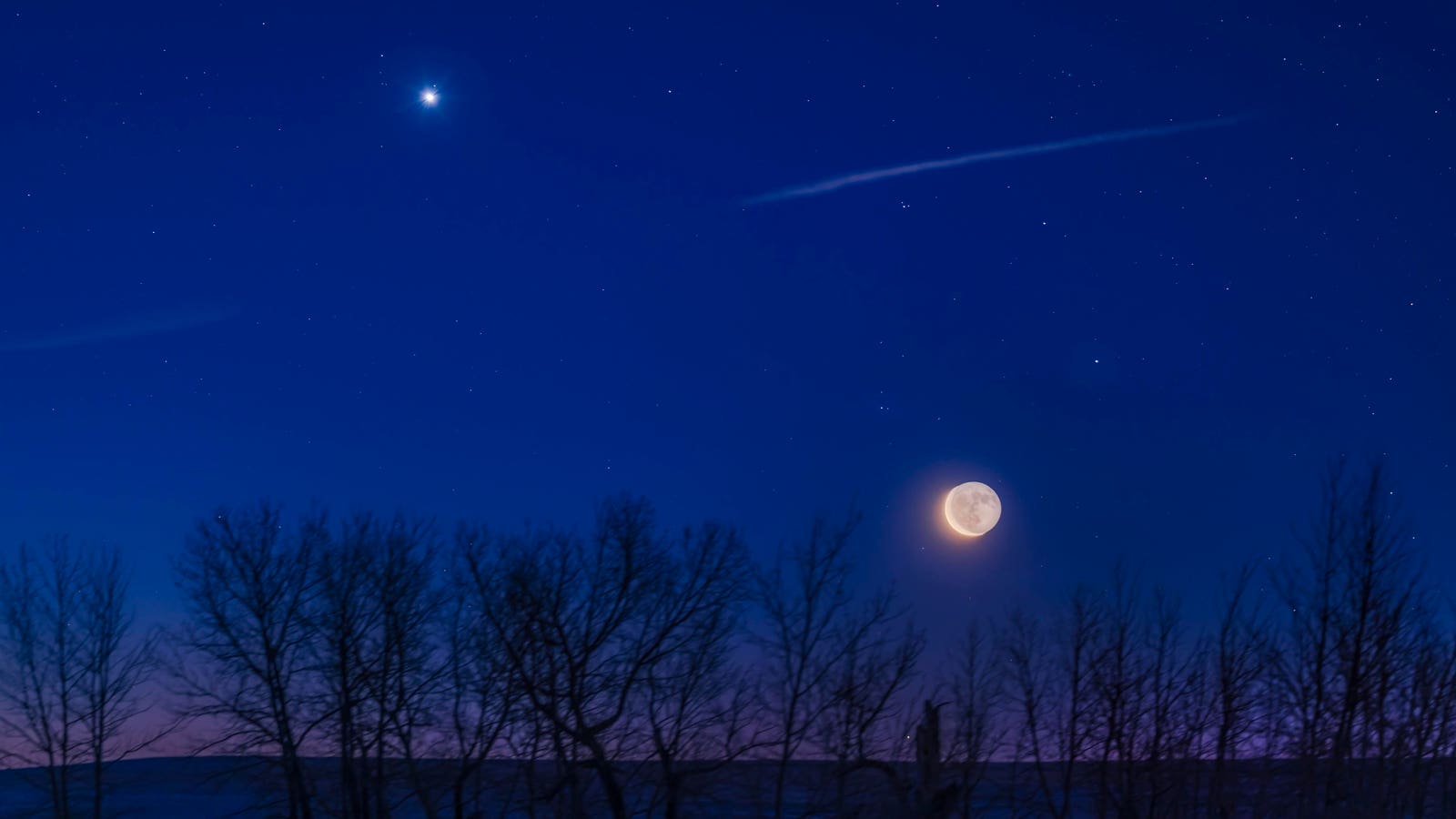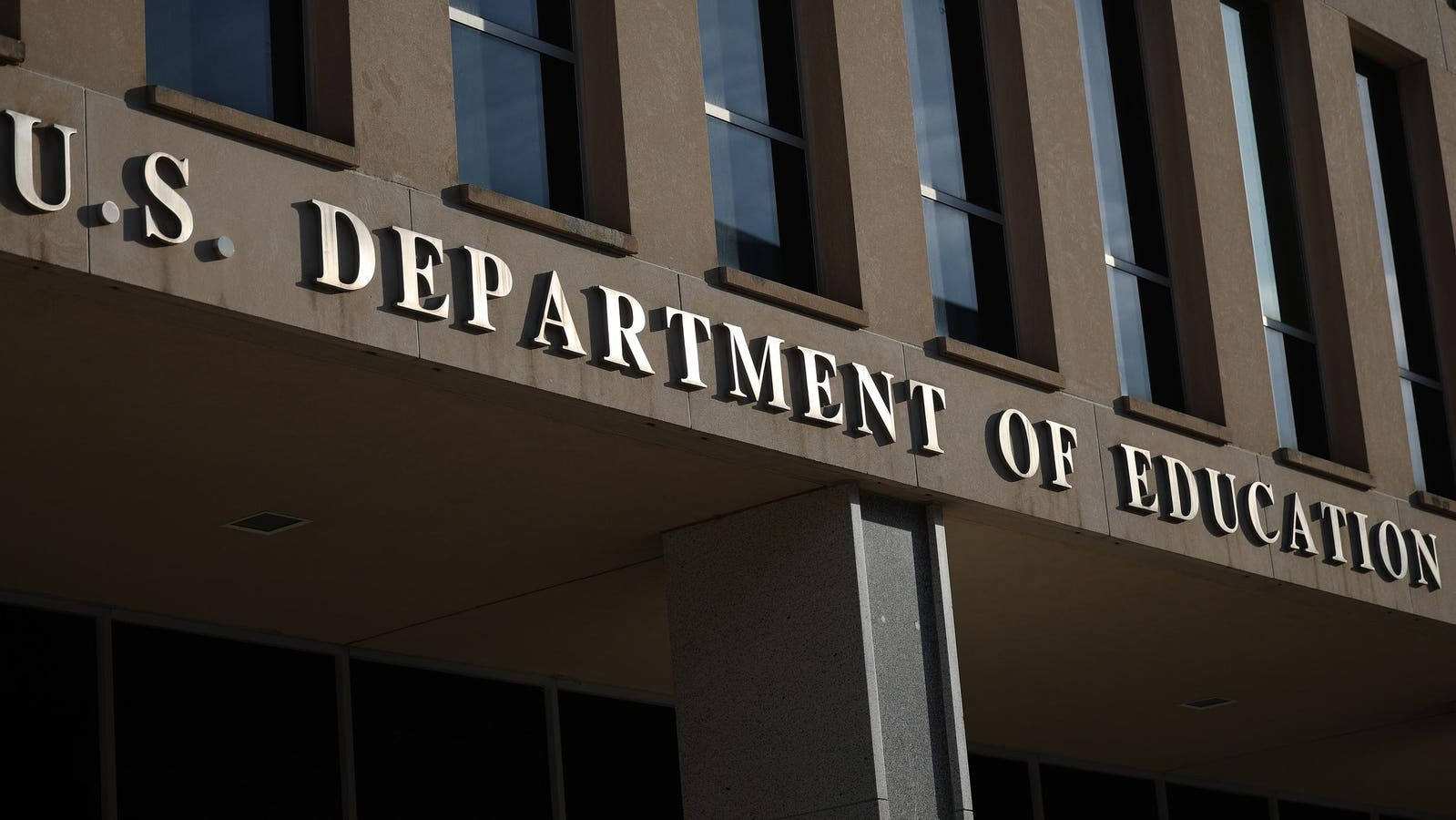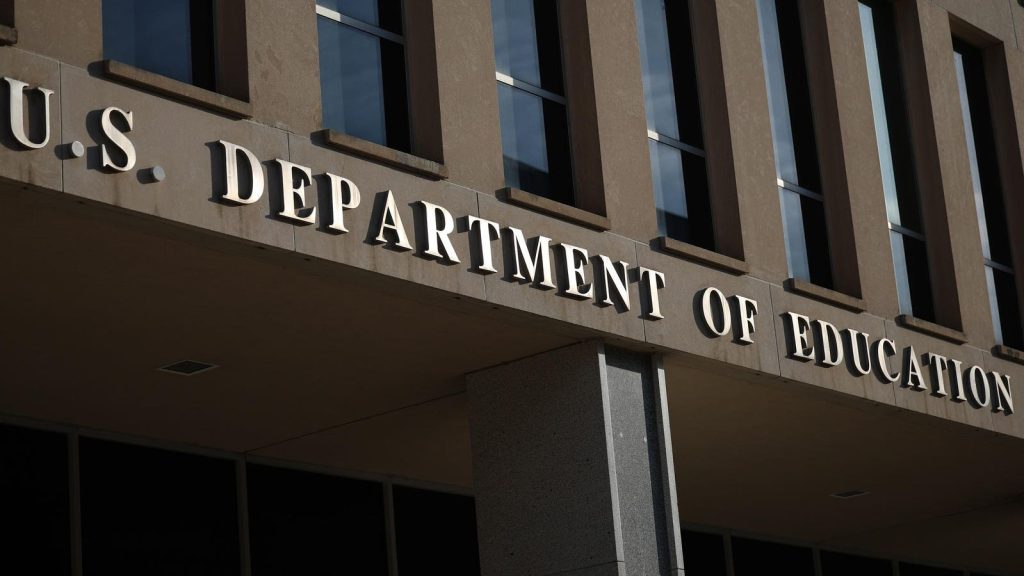Topline
On Friday, May 23 and Saturday, May 24, 2025, it will be possible to see a panorama of a delicate crescent moon low on the horizon flanked by three planets — Venus, Saturn and Neptune. In an entirely visual line-of-sight phenomenon, this mini-planet parade will be visible only for a short time before sunrise.
Venus, Saturn and a crescent moon will be visible to the naked eye this week, with Neptune close to … More Saturn. (Photo by: Alan Dyer/VWPics/Universal Images Group via Getty Images)
Key Facts
The event will take place due east and close to the horizon about 45 minutes before sunrise on Friday, May 23 and Saturday, May 24, 2025. Seeing this mini parade of planets will mean rising very early to see them before they’re overwhelmed by the light of the rising sun.
On Friday, May 23, a 20%-lit waning crescent moon will shine between Venus and Saturn. Neptune will be close to Saturn, but won’t be visible to the naked eye. This is arguably the best morning to see the planet parade.
On Saturday, May 24, a waning crescent moon will be just 13%-lit and be positioned to the left of Venus, closer to the horizon. This is arguably the best morning to see the crescent moon
During the event, Venus will be by far the brightest of the three planets, shining at -4.3 magnitude. That’s about 158 times brighter than Saturn, at 1.1 magnitude
Where to see the “planet parade” on Friday, May 23, 2025 (top) and Saturday, May 24, 2025 (bottom), … More with the position of Neptune indicated by red markers.
How To See Neptune
Although it’s not a particularly impressive sight, it is possible to see Neptune with a pair of binoculars or a small telescope. The farthest planet from the sun, Neptune is an ice-giant planet that looks blue-ish because of the methane in its atmosphere. Scientists used the James Webb Space Telescope and the Hubble Space Telescope to capture vivid auroras on Neptune for the first time in March.
‘earthshine’ On The Moon
Although the planets are the main focus, the most beautiful object on display during this event will be the crescent moon because it will display “Earthshine,” an ethereal sight to the naked eye and jaw-dropping in any binoculars. It’s only visible in a few mornings before and the evenings after the new moon, which this month occurs on Monday, May 26.
‘earthshine’ On The Moon
A subtle lighting on the darkened limb of the crescent moon, NASA states that Earthshine is sunlight reflected by Earth’s ice, oceans and clouds onto the moon. It’s also called planet-shine, moon glow and Da Vinci glow. The latter is named after the Italian scientist Leonardo da Vinci, who described the phenomenon in the 15th century.
The Next ‘planet Parade’
To have three planets in the night sky together is not rare. Back in February and March, there were seven clustered together, the densest for 40 years. That event won’t be repeated until 2036. The next major planetary parade featuring six planets will occur before sunrise on August 29, 2025, with the only major planet not visible being Mars.
Further Reading
ForbesNeptune’s Auroras Imaged For First Time As Webb And Hubble Team UpBy Jamie Carter
ForbesNASA Juno’s Jaw-Dropping New Jupiter Photos Are Some Of Its LastBy Jamie CarterForbesMars: Why The Red Planet’s Skies Will Turn Green This WeekBy Jamie Carter













